
Empowering Disabilities with This Robot
Meet the innovative robot that’s unlocking empowerment for people with disabilities. Discover how this cutting-edge technology is changing lives
In 2010, Henry Evans watched TV and saw a robot called PR2. It came from a company called Willow Garage, and a professor from Georgia Tech, Charlie Kemp, was showing how the PR2 could find a person and give them medicine. Most people thought the robot was just for fun.
But for Evans, it could change his life. He thought of the PR2 as a substitute for his body. He imagined using it to do things and interact with the world, which he couldn’t do for a long time while he was in bed.

Eight years before, when he was 40, Henry worked as a CFO in Silicon Valley. Then, he had a stroke-like attack due to a birth defect. Overnight, he became unable to speak and had quadriplegia.
He shared on his blog in 2006, “One day I was a 6’4”, 200 Lb. executive. I had always been very independent, maybe too much. But with one stroke, I became completely reliant on others for everything… I have to ask someone else to do every single thing I need, and I depend on them to do it.”
Henry can move his eyes, head, and neck, and slightly his left thumb. He can use head movements to control a computer cursor and type about 15 words per minute on an onscreen keyboard. This is how he communicated with IEEE Spectrum for this story.
After connecting with Kemp at Georgia Tech and teaming up with Willow Garage, Henry and his wife Jane started working with robot experts on a project called “Robots for Humanity.”
Their aim was to figure out ways to make life easier and more independent for people with disabilities, not just for them but also for the people who take care of them. The PR2 robot was the first of many helpful technologies created through Robots for Humanity.
Eventually, Henry could use the robot to do things like shave and scratch his own itch for the first time in ten years.
Jane Evans shared, “Robots used to be something I only saw in science fiction. When I started this journey with Henry, I never thought I’d have a robot in my home. But I told Henry, ‘I’m ready to go on this adventure with you.’
Everyone needs a purpose in life. Henry lost his purpose when he got stuck in his body. To see him find a new purpose—it gave my husband his life back.”

Henry emphasises that an assistive device should not only give more independence to the person with a disability but also make life easier for the caregiver.
He explains, “Caregivers are very busy and often aren’t interested in or good with technology. So if it’s not easy to set up and doesn’t save them a meaningful amount of time, they simply won’t use it.”
While the PR2 had a lot of potential, it was too big, expensive, and technical for everyday use. Jane remembers, “It cost $400,000 and weighed 400 pounds. It could cause a lot of damage if it bumped into things.
But I realised that the PR2 was like the first computers—if it’s what it takes to learn how to help someone, it’s worth it.”
For Henry and Jane, the PR2 was more of a research project than a practical tool. The same went for Kemp at Georgia Tech. A robot as impractical as the PR2 couldn’t have a direct impact outside of research.
Kemp had bigger plans, saying, “From the start, we wanted to take our robots into real homes and work with real people.” But doing that with a PR2 needed a team of experienced roboticists and a truck with a lift gate.
Eight years into the Robots for Humanity project, they still didn’t have a practical robot for people like Henry & Jane to use, which was incredibly frustrating for Kemp.
In 2016, Kemp embarked on the design of a new robot that would take advantage of recent advancements in hardware and computing power. This robot was intended to perform many of the tasks the PR2 could do but in a simpler, safer, and more cost-effective manner.
Kemp found a like-minded partner in Aaron Edsinger, who, like Kemp, had earned a Ph.D. at MIT under Rodney Brooks. Edsinger had previously co-founded a robotics startup that Google acquired in 2013.
Edsinger explained his motivation: “I’d grown frustrated with the complexity of robots designed for tasks in home environments and around people. [Kemp’s idea] provided an elegant solution to many of these problems.”
In 2017, Kemp and Edsinger joined forces to establish Hello Robot and turn their vision into reality.
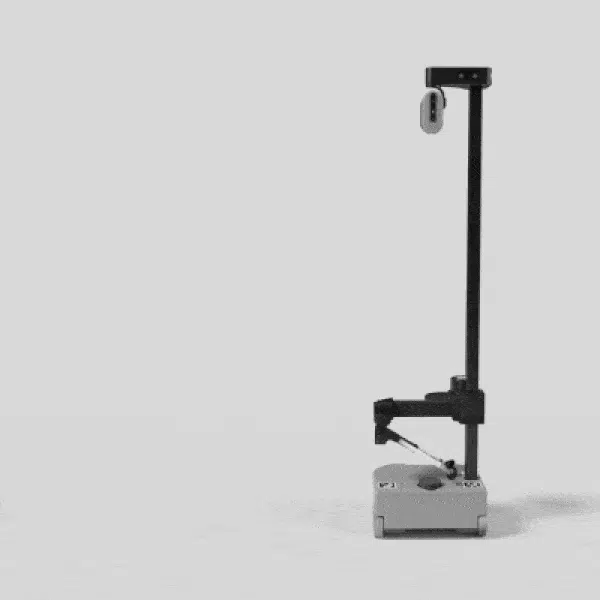
Kemp and Edsinger created a robot named Stretch. It’s compact and light, easy for one person to move. Unlike the costly PR2, Stretch is only $20,000. Its affordability is because of its simplicity.
It has a single arm with enough flexibility to move up and down and reach out, along with a wrist that can bend. The gripper at the end of the arm is based on an affordable grasping tool from Amazon.
It’s equipped with basic obstacle avoidance at the base and a depth camera on top, which can move around.
Stretch can even do simple tasks by itself, like picking up things and moving from one room to another. This simple design has advantages. Robots can be hard to control manually, and more joints mean more complexity.
Even for people without disabilities, directing a robot with many ways to move using a keyboard or a game pad can be tiresome and requires experience.
Stretch’s simplicity makes it a practical tool, especially for new users or those with physical limitations that affect how they interact with the robot.
“The most important thing for Stretch to be doing for a patient is to give meaning to their life,” explains Jane Evans.
“That translates into contributing to certain activities that make the house run, so that they don’t feel worthless. Stretch can relieve some of the caregiver burden so that the caregiver can spend more time with the patient.”
Henry is acutely aware of this burden, which is why his focus with Stretch is on “mundane, repetitive tasks that otherwise take caregiver time.”
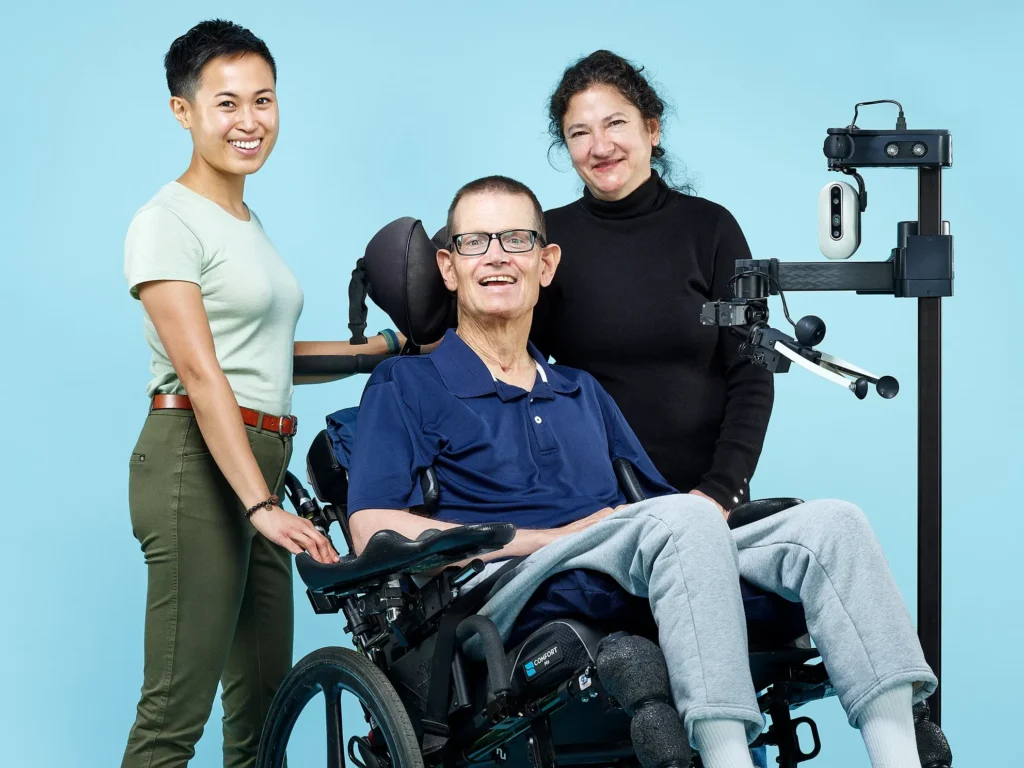
Vy Nguyen, an occupational therapist, has been collaborating with Hello Robot to incorporate Stretch into a caregiving role.
Thanks to a $2.5 million Small Business Innovation Research grant from the National Institutes of Health and partnerships with Wendy Rogers at the University of Illinois Urbana-Champaign and Maya Cakmak at the University of Washington.
Nguyen is actively exploring ways to make Stretch a valuable part of the daily lives of the Evans family.
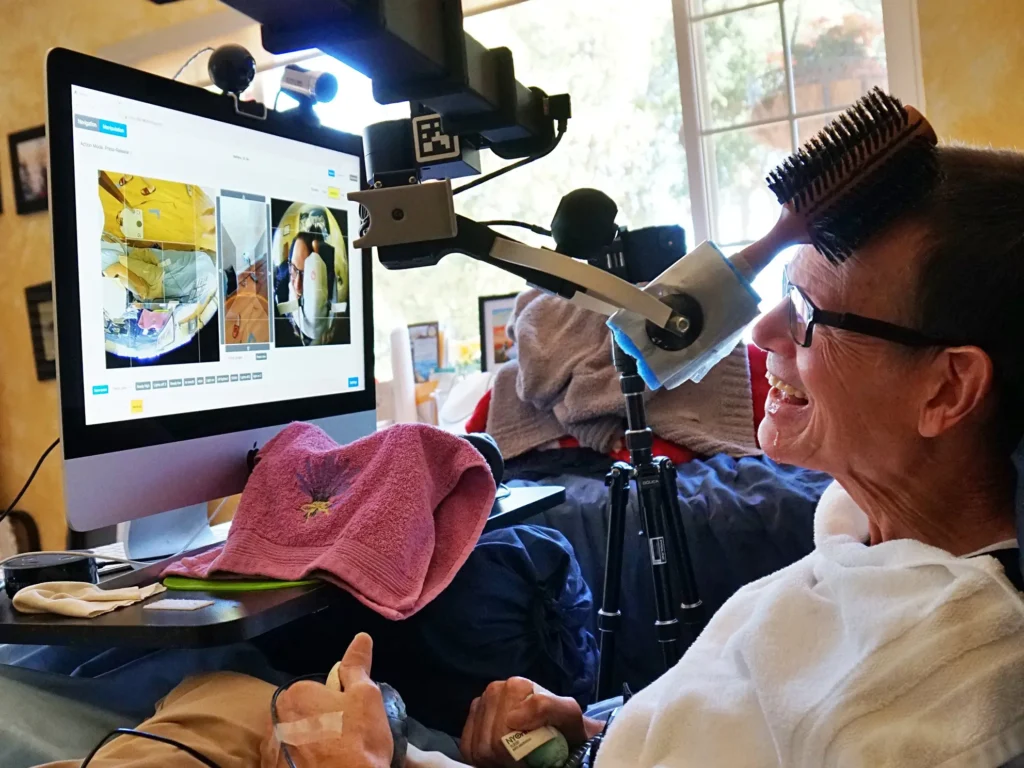
Many tasks can be frustrating for patients who depend on caregivers, according to Nguyen. Henry often experiences itches that he can’t scratch, and this can be quite debilitating.
Instead of having to ask Jane for help each time, Stretch can pick up a scratching tool and assist Henry in scratching those itches himself. While this may seem like a small thing, it has a significant impact on Henry’s quality of life, reducing his reliance on family and caregivers.
Nguyen explains, “Stretch can bridge the gap between the things that Henry did before his stroke and the things he aspires to do now by enabling him to accomplish his everyday activities and personal goals in a different and adaptable way through a robot. Stretch becomes an extension of Henry himself.”
This is a unique aspect of a mobile robot that is especially valuable for people with disabilities. Stretch provides Henry with his own agency in the world, opening up possibilities beyond traditional occupational therapy.
Henry notes that the researchers have found several creative uses for Stretch that he wouldn’t have imagined. Through Stretch, he can play poker with friends without needing someone to handle his cards, send and retrieve recipes, assist in the kitchen, deliver meals, clear dishes, and even transport laundry.
These seemingly simple tasks are incredibly meaningful, as Jane explains, “How do you make that person feel like what they’re contributing is important and worthwhile? I saw Stretch being able to tap into that. That’s huge.”
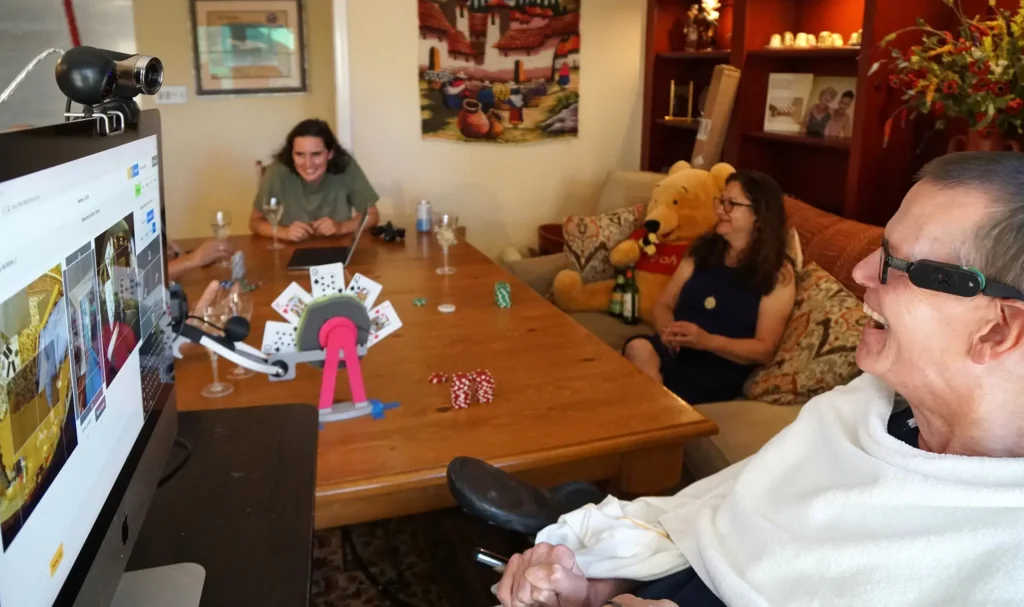
One day, Henry used Stretch to surprise Jane with a rose. Before that, Jane recalls, “Every time he would pick flowers for me, I’m thanking Henry along with the caregiver.
But when Henry handed me the rose through Stretch, there was no one else to thank but him. And the joy in his face when he handed me that rose was unbelievable.”
Stretch has also allowed Henry to connect with his three-year-old granddaughter, who may not fully comprehend his disability and used to perceive him, according to Jane, as something like a piece of furniture.
Through Stretch, Henry can engage in playful activities like basketball and bowling with his granddaughter, affectionately known as “Papa Wheelie.” Nguyen adds, “She knows it’s Henry, and the robot helped her see him as a person who can play and have fun with her in a very cool way.”
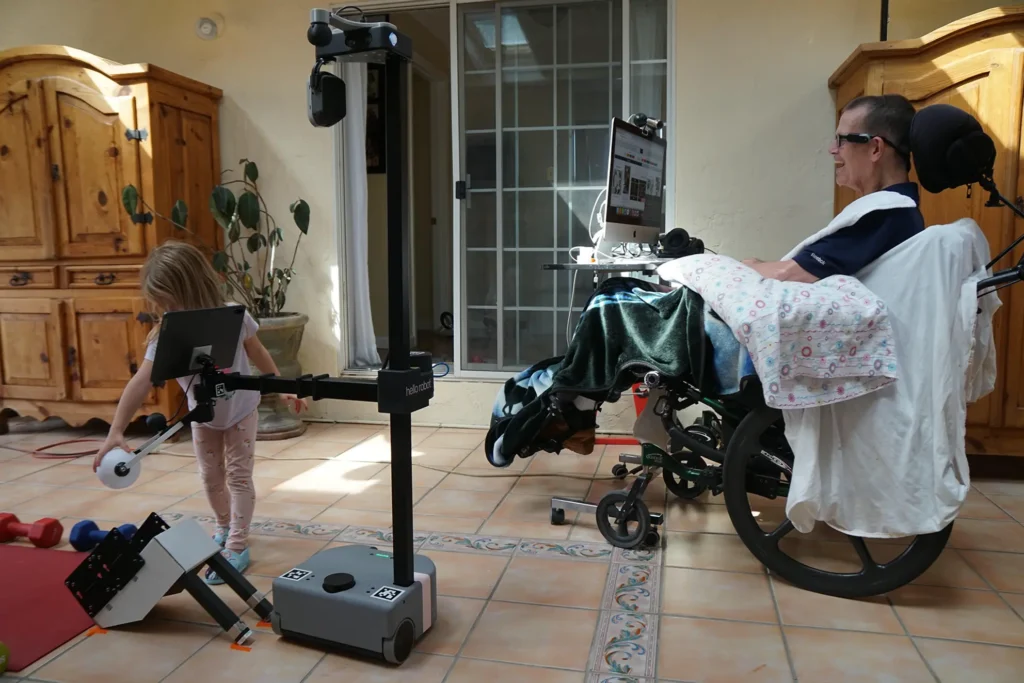
The person putting in the most effort to make Stretch a useful tool is Henry himself. He’s constantly “pushing the robot to its limits to see all it can do,” he explains.
While Stretch is physically capable of performing various tasks (and Henry has expanded its capabilities by creating custom accessories), one of the most significant challenges for users is figuring out how to precisely instruct the robot to perform specific actions.

Henry worked closely with researchers to create his own user-friendly interface, featuring multiple camera views and large on-screen buttons, which simplifies the manual control of Stretch.
However, the true potential for Stretch’s success lies in its ability to operate partially or fully autonomously. The robot relies on a specific form of autonomy called “assistive autonomy,” as explained by Jane. This means that Henry is in charge of the robot, but the robot makes it easier for Henry to achieve his goals.
For instance, manually positioning the robot to pick up a scratching tool is a tedious process. Assistive autonomy allows Henry to have more control, enabling Stretch to move to the correct position on its own.
Currently, Stretch has a menu of pre-programmed movement sequences that Henry can select from. Henry clarifies, “I can teach the robot to perform a series of movements quickly, but I still have complete control over what those movements are.”
According to Henry, the most significant challenge right now is getting the robot’s assistive autonomy to a functional and user-friendly state. Stretch can autonomously move through the house, and the arm and gripper can be controlled reliably.
However, work remains to be done in creating simple interfaces (like voice control) and ensuring that the robot is easy to turn on and won’t unexpectedly shut down. It’s important to note that it’s still a piece of research hardware.
Once the challenges related to autonomy, interfaces, and reliability are overcome, Henry anticipates that the conversation will shift to addressing cost-related issues.
At $20,000, the cost of Stretch is a significant consideration, and the key question is whether it can deliver enough value to justify its price for individuals with cognitive and physical impairments.
Charlie Kemp from Hello Robot states, “We’re going to keep refining to make Stretch more affordable. We want to create home robots that can be used by everyone, and we understand that affordability is essential for most households.”
Even at its current price point, if Stretch can reduce the need for a human caregiver in certain situations, it will eventually pay for itself. Human care is costly, with the nationwide average exceeding $5,000 per month for a home health aide, which is unaffordable for many individuals.
A robot that can lessen the reliance on human care by a few hours a week could recoup its cost within just a few years. Additionally, it’s important to consider the value of care provided by family members. For families like the Evanses, who have a hired caregiver, a significant portion of daily care responsibilities falls on family members.
This is a common situation, and it’s where Stretch can be particularly beneficial—by enabling individuals like Henry to manage more of their own needs without being solely dependent on someone else’s assistance.
While Stretch has shown significant potential, it does have notable limitations. The robot can only lift around 2 kilograms, so it can’t assist in manipulating Henry’s body or limbs.
It cannot navigate stairs, is not designed for outdoor use, and still requires a fair amount of technical oversight. Despite the capabilities of Stretch or similar robots, Jane Evans is confident that they can never replace human caregivers, nor would she want them to.
She emphasises the importance of the human touch, the emotional connection, and the compassion that human caregivers provide, which robots cannot replicate.
Stretch might still have a way to go before becoming a consumer product, but there’s certainly interest in it, as noted by Nguyen. Many people with paralysis are looking for robots like Stretch to enhance their independence and reduce their reliance on caregivers.
The usefulness of an assistive robot may not solely be measured by the tasks it performs for a patient, but by what it represents to the patient, their family, and caregivers.
The experience of Henry and Jane demonstrates that even a robot with limited capabilities can have a significant impact on the user. As robots become more capable, their impact will likely grow.
Jane envisions home robots like Stretch becoming a reality. The timing remains uncertain, but she doesn’t believe it’s too far off. She emphasises the importance of helpful home robots, considering the rapid aging of human society.
Most of us will eventually require some form of assistance with daily activities, and before that, we’ll be assisting our friends and family. Robots have the potential to ease the burden for everyone.
For Henry Evans, Stretch is already making a meaningful difference. He states, “They say the last thing to die is hope. For the severely disabled, for whom miraculous medical breakthroughs don’t seem feasible in our lifetimes, robots are the best hope for significant independence.”
Never miss any important news. Subscribe to our newsletter.
Related News


British Investor Who Predicted US Slump Warns of Next Crash

I’m a Death Doula: 4 Reasons I Believe Death Isn’t the End


Tech to Reverse Climate Change & Revive Extinct Species

AI Unlocks the Brain’s Intelligence Pathways
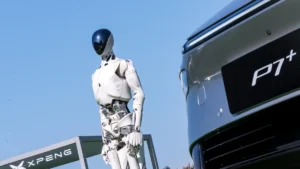
XPENG Unveils Iron Robot with 60 Human-like Joints

Can AI Outsmart Humanity?

11 ChatGPT Prompts to Boost Your Personal Brand

Keir Starmer Hints at Possible Tax Hikes on Asset Income

Navigating the Future of AI: Insights from Eric Schmidt
